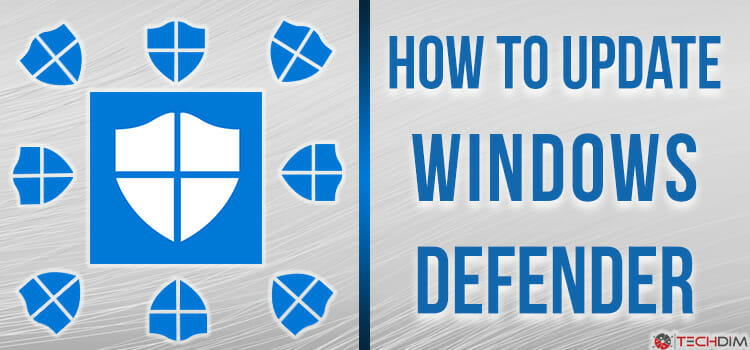ASCII vs EBCDIC | Which One is Better?
ASCII and EBCDIC are two different encoding schemes to achieve the same goal of representing single characters with the help of binary numbers. Let’s go ahead and see a complete comparison of ASCII vs EBCDIC and determine which one is the more preferred coding standard.

What is ASCII Code
ASCII is the acronym of the American Standard Code for Information Interchange and it is a commonly used encoding format. It was firsts applied to a teleprinter by Bell data service. The development of ASCII started in 1960 by ANSI. The main idea behind it was to facilitate connectivity between computers using the standard English language. Here each English letter, number, and commonly used symbol are identified with a 7-bit unique number. So, it can encode up to 2^7 or 128 characters that include upper case and lower case English letters, numbers, and symbols.
For example, “B” is represented in ASCII with decimal 66 and “b” with decimal 98. So, the difference between each uppercase and lowercase letter is 32. The non-printing characters like carriage return, line feed tab, ESC, etc. are represented by the first 33 codes of the ASCII table. The 128th ASCII code is reserved for the “delete” key of a keyboard.
In the majority of computers, 8 bits are reserved for every ASCII character. As ASCII utilizes only 7 bits, the extra last bit is used as a parity bit to prevent communication errors.

Advantage of ASCII Code
The main advantage of ASCII code is its small bit pattern with only one byte or 7 bits per character. So, it can be transferred in lesser time and occupies a lesser amount of space in memory.
As it is an encoding format to encode only English and alphanumeric characters, almost all the computers use ASCII code. It enables all computers to share documents and files by featuring a common English language.
Limitations of ASCII Code
Allocation of only 128 characters is not enough to represent different mathematical symbols, emojis, and other characters. To present large values 7-bit pattern is not enough.
As it can only encode the English language, it lacks versatility and is not a standardized coding format all over the world. Also, it cannot interpret a document encoded in another coding format.
What is EBCDIC Code
Extended Binary Coded Decimal Interchange Code or EBCDIC is a coding scheme that implements an 8-bit or 1-byte binary code pattern to express each character. So, in total it is capable to encode 2^8 or 256 characters maximum.
IBM came up with the idea of the EBCDIC code in 1963 and 1964. The release of IBM/360 mainframe computers declared the EBCDIC coding scheme. It was created from the codes of pre-electronic punched card machines of IBM.
Here each bides is divided into nibbles containing 4 binary bits. The firsts nibble defines the character class and is called the zone. The second nibble defines the character and is called the digit.
The 0000 0000- 0011 1111 EBCDIC code is for control characters, 0100 0000- 0111 1111 are for punctuations, 1000 0000- 1011 1111 is for lowercase alphabets, and 1100 0000- 1111 1111 is reserved for uppercase characters and numbers. For example, if the first nibble is composed of the only 1s then it means a character is a number and the 2nd nibble represents the number.

Differences Between ASCII and EBCDIC Code
Here a difference chart is provided. By following this you can find out which one is better to work with.
| Parameters | ASCII | EBCDIC |
| Application Field | Use in Electronic Communication | Use in IBM platforms. |
| Numbers of Bits and Characters | Use 7-bits and represent 27or 128 characters. | Use 8-bits and represent 28or 256 characters. |
| Character Arrangements | Arrange in consecutive order | Groups 9 characters at a time. |
| modern encoding Compatibility | Yes, UNICODE supports ASCII | No |
| Efficiency | More | Less |
Applications
Most people don’t know that while typing on their computer keyboards there is used ASCII codes for every character to enable the computer to identify that text. Basically it uses in Electronic Communication. Also, they are used in email transmission, data conversion, text files, graphics arts, browsers, C programming, etc. ASCII format also is used in UNIX and DOS type operating systems.
Mainly EBCDIC coding scheme is implemented on IBM midrange computer OS and IBM mainframe. Also, some pcs and Macintoshes apply EBCDIC code. It is widely used in S/390 servers and OS/390 OS of IBM.
Still, they are applied in modern mainframes to provide backward compatibility. It is also used in some non-IBM platforms such as OS-IV, MSP, MSP-EX, Unisys VS/9, MCP, and so one. It was an extended version of EBCDIC codes.
The cent sign character makes EBCDIC easier for punched cards compared to ASCII. This is the advantage of EBCDIC over ASCII.
Characteristics and Coding Scheme
EBCDIC code uses a complete byte but ASCII uses 7-bits to identify a single character. So, ASCII is a more efficient coding scheme and requires less memory.
ASCII can code 128 characters where EBCDIC can represent a maximum of 256 characters. So, EBCDIC can represent a wider range of characters.
ASCII encodes characters with their traditional consecutive characters. But EBCDIC follows no such linear orders and groups 9 characters every time. ASCII utilizes the last bit as parity but as EBCDIC employs a whole byte, parity checking cannot be done here.
Working Efficiency and Compatibility
ASCII is compatible with Unicode but EBCDIC lacks compatibility. Also, it cannot interpret ASCII codes.
EBCDIC is quite complex to deal with while ASCII is a generalized format that is easily understandable.
Advantages and Limitations of ASCII and EBCDIC Code
Here we have provided the advantages and limitations of both ASCII and EBCDIC.
Advantages of EBCDIC Code
In the case of numbers, if the first nibble is masked off from an EBCDIC code, it will represent the number. It limits the total number of hole punches per column thus increasing the durability of punch cards. It has a wider range of control characters.
Limitations of EBCDIC Code
The non-contiguous code arrangement used for the alphabets in EBCDIC is one of the many limitations of it. the EBCDIC coding scheme cannot support a few important punctuation marks like a square bracket and only allows up to 2 languages.
An extra bit of the EBCDIC coding scheme makes it less efficient. It is different and not compatible with other established coding schemes like ASCII and Unicode. So, it is not perfect for the modern computer. To transfer data between computer and mainframe, a conversion utility is required to perform the conversion between two schemes. Also, different versions of the EBCDIC code lack compatibility with each other.
Sum Up
Though ASCII vs EBCDIC both are commonly used data coding standards, they are not much similar. In this article we tried to provide you clear and in detail ideas about ASCII and EBCDIC code and ASCII vs EBCDIC comparison. They mainly differ in their coding pattern, character range, coding method, memory use, compatibility, and efficiency.
Despite the wide range of characters that EBCDIC code can cover, programmers prefer ASCII over EBCDIC. ASCII is preferred by programmers worldwide for its linear coding arrangement. EBCDIC is only a better option for punched machines employed by IBM. Otherwise, it hasn’t any excellent side to be advantageous over the ASCII coding scheme.
Subscribe to our newsletter
& plug into
the world of technology





